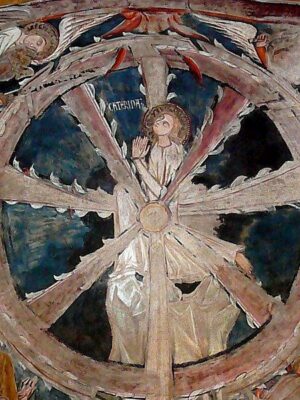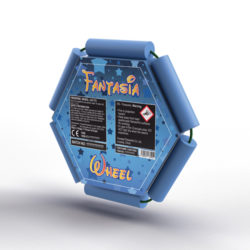
The Mighty Catherine Wheel
Fireworks are a captivating spectacle, filling the night sky with a myriad of colours and patterns. Among the many dazzling displays, Catherine Wheels stands out as one of the most iconic fireworks. These spinning wonders are named after, St. Catherine of Alexandria who was said to have been bound to a wheel of spikes. In this blog post, we delve into the fascinating science behind Catherine Wheels and explore how they work.
The Basic Design
Catherine Wheels consist of a tubular device with multiple spokes or vanes attached to a central hub. These vanes are normally made of lightweight metal or paper and are packed with a combustible mixture. The wheel is mounted on a secure structure and ignited at the centre. As the wheel spin rapidly, they create a vibrant display of light and colour.
Centrifugal Force at Play
The key to the spin of Catherine Wheels lies in the principle of centrifugal force. As the combustible mixture ignites, it rapidly expands and generates gases. These gases are expelled through small vents or nozzles on the vanes, creating a controlled jet of gas. According to Newton’s third law of motion, every action has an equal and opposite reaction. As the gas rushes out, an equal and opposite force is exerted on the wheel, causing it to rotate in the opposite direction.
Conservation of Angular Momentum
Another fundamental principle at work is the conservation of angular momentum. Once the wheel is initially ignited, it is at rest. As the gas is released, it exerts a torque on the wheel, causing it to start spinning. According to the law of conservation of angular momentum, the total angular momentum of a system remains constant unless an external torque acts upon it. As the Catherine Wheel spins, the angular momentum is conserved, creating a sustained rotation.
Aerodynamics and Design
The design of the vanes plays a crucial role in the performance of Catherine Wheels. Firstly, the shape and orientation of the vanes determine the airflow and, consequently, the rotational motion. Vane designs that provide optimal aerodynamics, such as curved or angled surfaces, enhance the spinning effect. By manipulating the size, shape, and placement of the vanes, firework designers can achieve different patterns and speeds of rotation.
Conclusion
The captivating display of a Catherine Wheel is a result of the precise interplay between physics and design. Understanding the principles of centrifugal force, conservation of angular momentum, and aerodynamics helps us appreciate the intricate science behind these spinning fireworks. The next time you witness a Catherine Wheel lighting up the night sky, you can marvel not only at its beauty but also at the scientific marvels that make it possible. Remember, though, that the true beauty lies in enjoying fireworks responsibly and safely.



